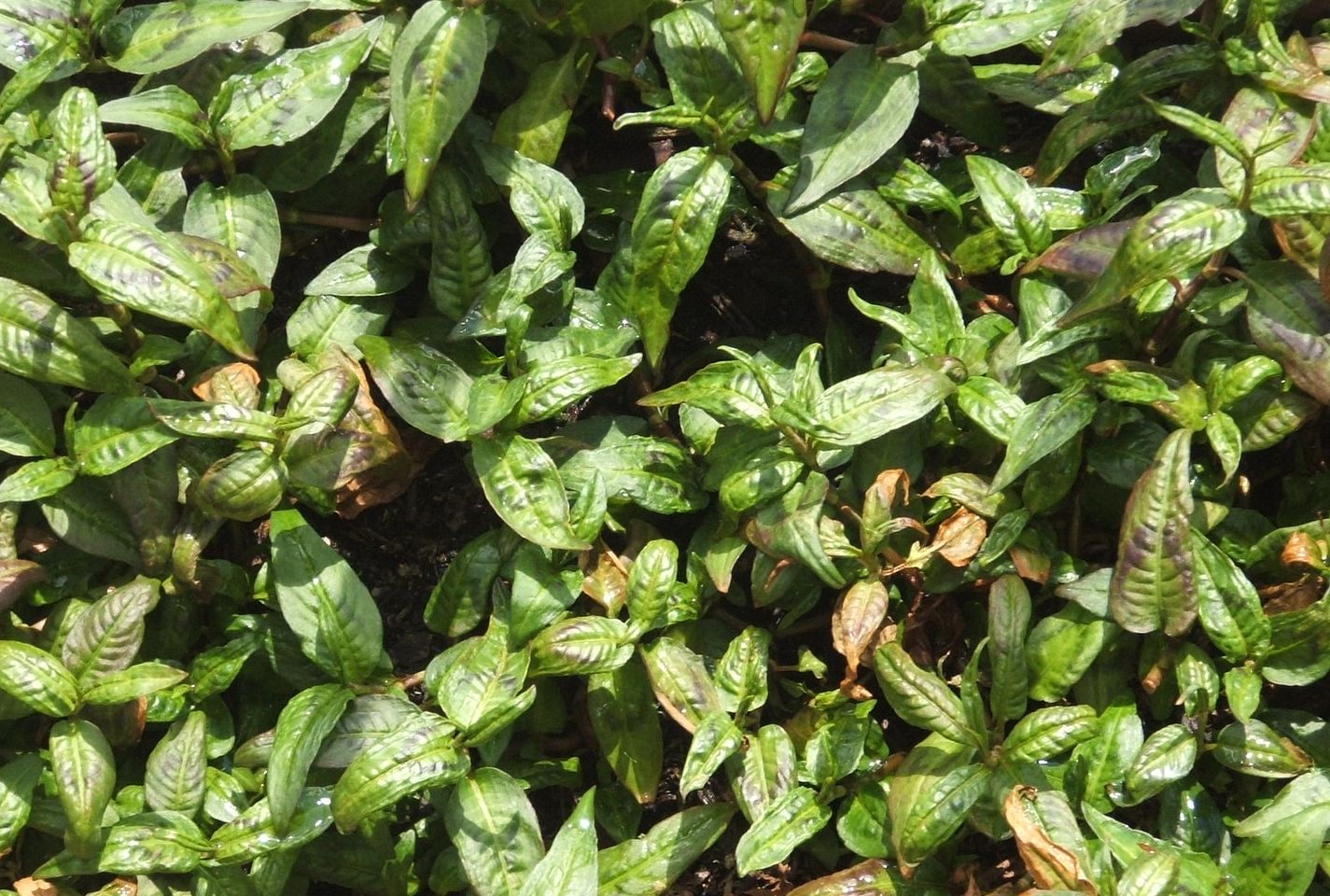- Vietnamese coriander
Taxobox
name = Vietnamese coriander

image_width = 250px
regnum =Plant ae
divisio = Magnoliophyta
classis = Magnoliopsida
ordo =Caryophyllales
familia =Polygonaceae
genus = "Persicaria "
species = "P. odorata"
binomial = "Persicaria odorata"
binomial_authority = Lour.Vietnamese coriander ("Persicaria odorata", syn. "Polygonum odoratum",
Polygonaceae ) is aherb of which the leaves are frequently used inSoutheast Asia n cooking. Other English names for the herb include Vietnamese mint, Vietnamese cilantro, Cambodian mint and hot mint. The Vietnamese name is rau răm, while in Malaysia and Singapore it is called "daun kesom" or "daun laksa" (laksa leaf). In Thailand, it is called pak pai (ผักไผ่). It is not related to the mints, but the general appearance and odor are reminiscent.Above all, the leaf is identified with
Vietnamese cuisine , where it is commonly eaten fresh in salads (includingchicken salad ) and in rawsummer roll s ("gỏi cuốn"), as well as in some soups such as "canh chua ", and stews, such as fish "kho tộ". It is also popularly eaten with "hột vịt lộn" (fertilizedduck egg, known as "balut " in the Philippines).In the
Cuisine of Cambodia , the leaf is known as "chi krasang tomhom" (ជីរក្រសាំងទំហំ) and is used in soups, stews, salads, and the Cambodian summer rolls, "naem" (ណែម) .In
Singapore andMalaysia , the shredded leaf is an essential ingredient of "laksa ", a spicy soup, so much so that the Malay name "daun laksa" means "laksa leaf."In certain parts of
Thailand the leaf is eaten with raw beeflarb .In
Australia the plant is being investigated as a source of essential oil (kesom oil).Characteristics
The Vietnamese coriander is a
perennial plant that grows best in tropical and subtropical zones in warm and damp conditions. In advantageous conditions, it can grow up to 15 to 30 cm. In the winter or when the temperature is too high, it can wither.The top of its leaf is dark green, with chestnut-colored spots while the leaf's bottom is burgundy red. Its stem has sections. In Vietnam it can be cultivated or found in the wild.
Components
Its oil contains
aldehyde s such asdecanal (28%) anddodecanal (44%), as well as the alcohol decanol (11%).Sesquiterpene s such as α-humulene and β-caryophyllene comprise about 15% of its oil.Medicinal uses
According to Vietnamese experts, Vietnamese Coriander has a bitter and spicy taste, is nontoxic, and can detoxify foodFact|date=December 2007. They claim that it can be used to treat swellings, acne, indigestion, flatulence, and stomachaches.Fact|date=December 2007
Effects on health
In many Vietnamese herbal remedies, it is used to repress sexual urges. There is a saying in Vietnamese, "rau răm, giá sống" ("Vietnamese coriander, live bean sprouts") meaning that Vietnamese coriander has the ability to reduce sexual desires, while bean sprouts have the opposite effect. Many Buddhist monks grow coriander in their private gardens and eat it frequently as a helpful step in their celibate life.
External links
* [http://www.uni-graz.at/~katzer/engl/Poly_odo.html Vietnamese Coriander (Polygonum odoratum Lour.) page] from Gernot Katzer's Spice Pages
*Kesom Oil – a New Essential Oil for the International Flavour and Fragrance Industry "in" [http://www.rirdc.gov.au/reports/NPP/UQ33A2.pdf First Australian New Crops Conference 1996 – Volume 2]
Wikimedia Foundation. 2010.
